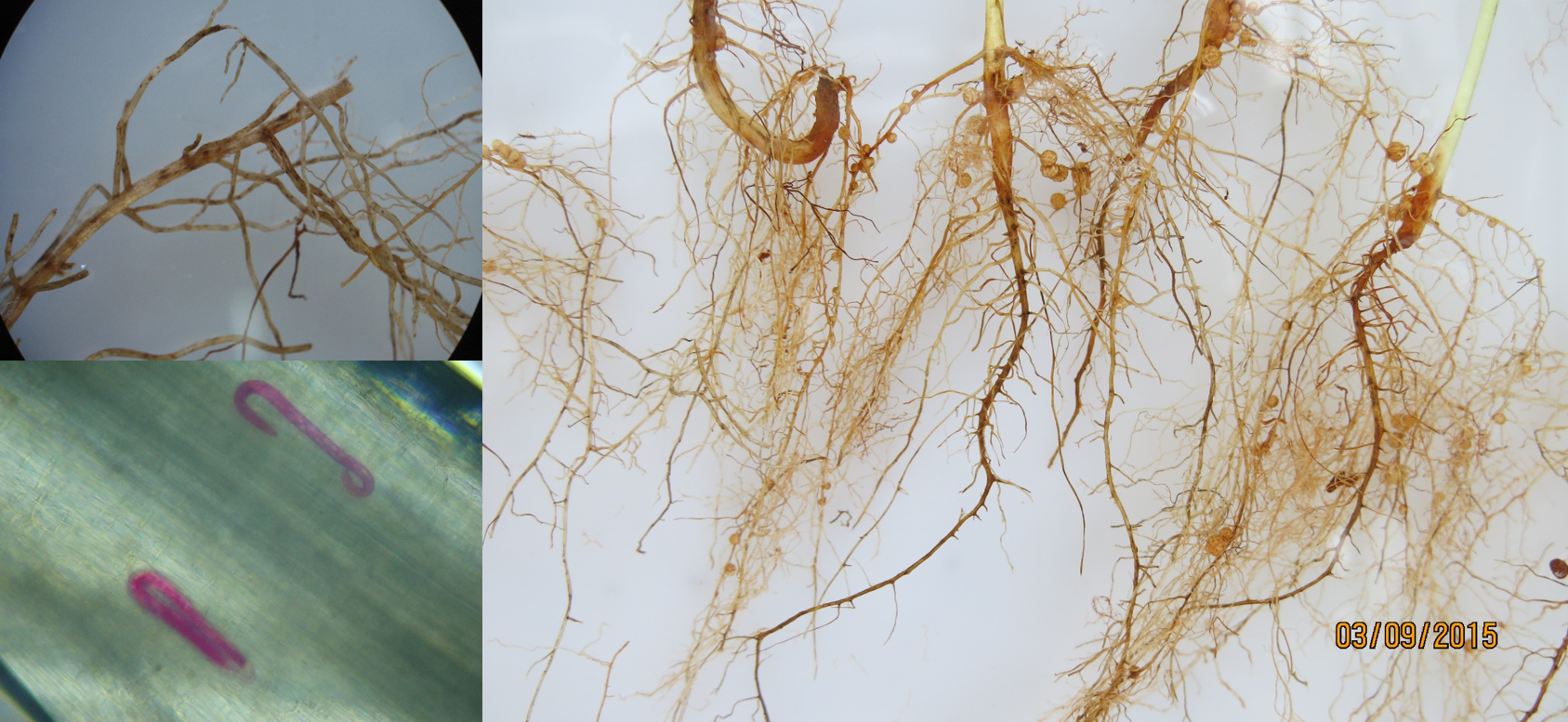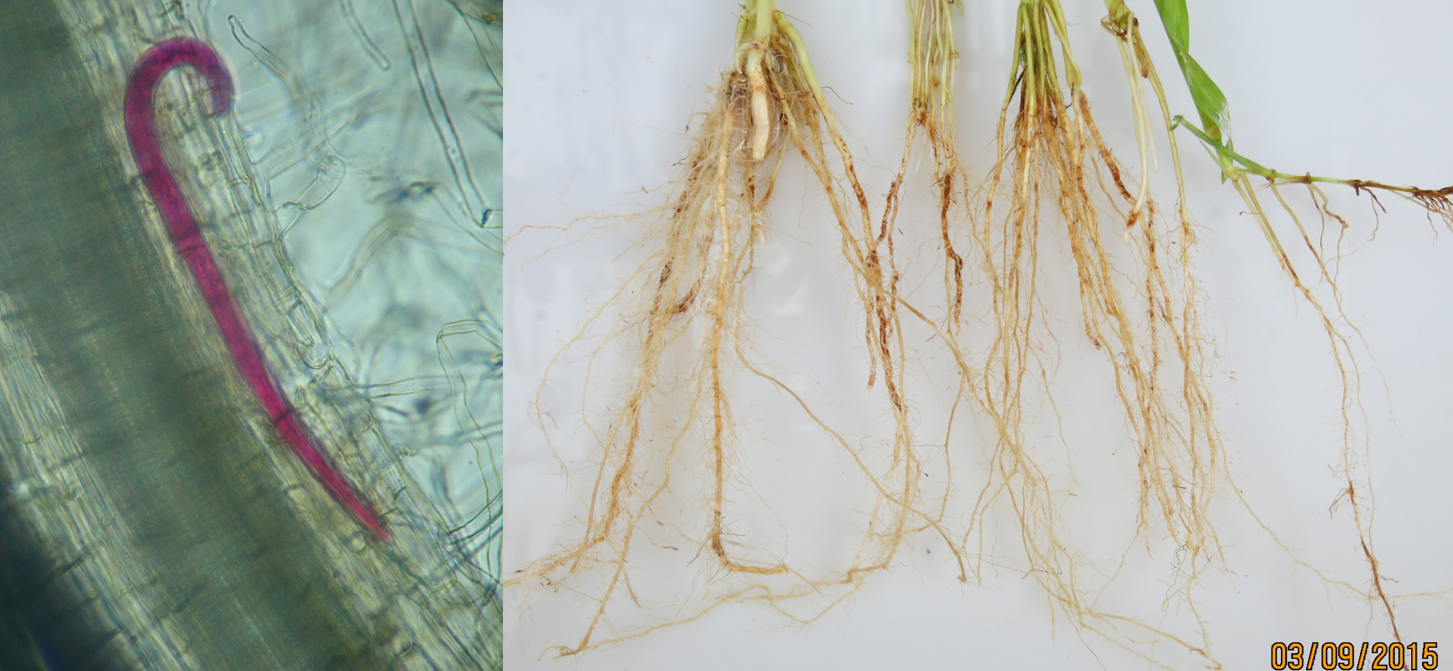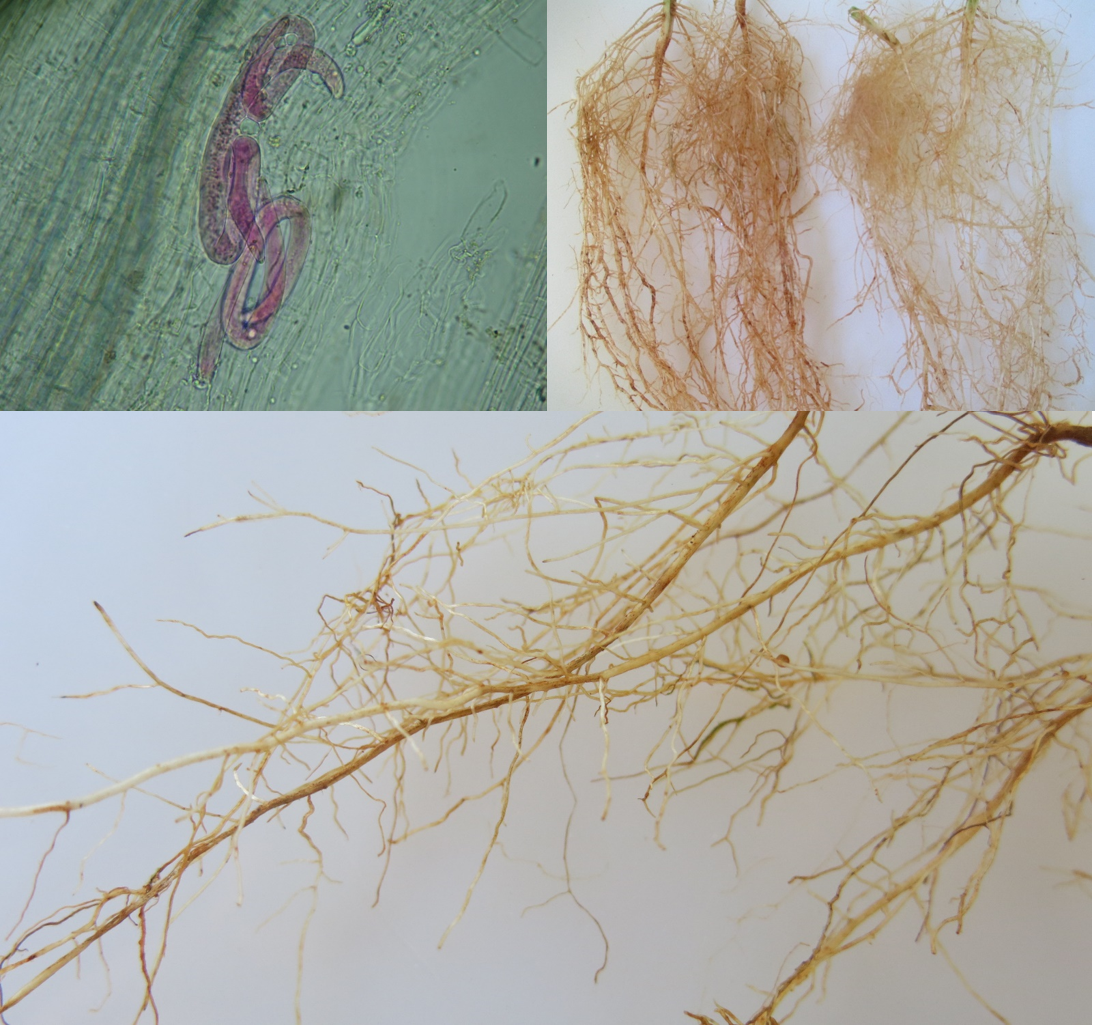Importance of wheat seed treatment
Seed treatment is an alternative to minimize the incidence of diseases caused by fungi and bacteria
In addition to the nematodes that already cause damage to soybean crops in Brazil, Helicotylenchus dihystera e Scutellonema brachyurus start to worry producers and research. Although more restricted in occurrence, Tubixaba tuxaua is another species that deserves attention.
In the year in which the Brazilian Society of Nematology celebrates its 40 years of existence, discussions are in focus among Brazilian nematologists regarding the problem involving nematodes as serious pathogens of several crops of agricultural importance for Brazil, in addition to emerging species, which can become important in the near future.
Since the first description of a root-knot nematode, Meloidogyne exigua, parasitizing coffee trees in the then province of Rio de Janeiro, in 1892, agriculture is periodically confronted by new or emerging species of nematodes that become serious problems in a short space of time.
Examples abound in the nematological literature. Approximately a century after this first description, another nematode was reported in Brazil, the soybean cyst nematode (NCS), Heterodera glycines, parasitizing soybean plants. This nematode spread rapidly across crops and, from an initial area of 5.000ha at the time of its discovery in 1991/92, expanded to more than 200.000ha in the following years, with losses estimated at more than 20.000 million dollars. Currently, NCS continues to cause economic losses in soybean crops in Brazil, despite the widespread use of resistant cultivars.
Furthermore, despite the constant and well-known importance of root-knot nematodes for Brazilian agriculture, there are recent examples of root-knot species Meloidogyne emerging markets that have caused important losses, as is the case of M. enterolobii (=M. mayaguensis) in guava and tobacco.
More recently, a species considered a secondary pathogen in soybean crops until the end of the 1990s, the root lesion nematode, Pratylenchus brachyurus, has become the main nematological problem of the crop, especially in the conditions of the Brazilian Cerrado.
Faced with such problems, nematologists have always joined forces to face the crisis and find efficient management solutions for producers. And now it is no different: with new problems imminent, many are already discussing the situation and starting the search for management alternatives, before these nematodes cause greater damage to producers.
This is the case of two species, identified as potential pathogens for soybean crops, Helicotylenchus dihystera e Scutellonema brachyurus, in addition to a third, with a more restricted occurrence, Tubixaba tuxaua (Figure 1).
So much H. dihystera as S. brachyurus They are considered ectoparasitic species, that is, they do not have the ability to penetrate plant roots and, therefore, theoretically, the damage caused to the root system would be less. The first, H. dihystera, is a very common nematode to be observed in soil samples in many crops, while S. brachyurus its occurrence has increased in recent years. In recent times, both species have appeared with a greater frequency of occurrence in nematological analyzes carried out in soybean crops and also in greater quantities, mainly in the states of Mato Grosso, Goiás, Maranhão, Mato Grosso do Sul and Paraná.
In the case of T. tuxaua, this is a nematode described in Brazil by the professor at Esalq, in Piracicaba, Aílton Rocha Monteiro, with little information about its life cycle or circle of hosts. Its occurrence also appears to be restricted to the states of Maranhão, Tocantins, Paraná and Mato Grosso, although its spread may be underestimated due to difficulties in its recognition and identification.
In the last edition of the Brazilian Nematology Congress, held in June 2015, in Londrina, Paraná, the three nematodes gained prominence and were the subject of an exclusive round table to discuss their occurrence, potential for damage and management. Unfortunately, there is still little information available to conclude that these are important pathogens for soybean crops. But the studies carried out to date raise concerns regarding these nematodes.
Studies carried out this year by the Nematology Laboratory of the Agronomic Institute of Paraná (Iapar), located in Londrina, indicate that H. dihystera e S. brachyurus can be considered as potential pathogens for soybean crops and others that are part of the soybean production system.
The work presented by Iapar at the Nematology Congress shows that both can penetrate the soybean root system, contrary to what was expected due to the parasitism habit of these nematodes, and, in addition, cause injuries similar to those caused by P. brachyurus, the root lesion nematode (Figures 2, 3 and 4).
In the specific case of H. dihystera, a population was purified from a soil sample received by the laboratory and maintained in a greenhouse on soybean and millet plants. Millet was used, since the sample received came from a soybean crop where there was rotation with ADR300 millet. It was observed, approximately 70 days after inoculation of 50 specimens per plant, the appearance of root symptoms similar to those observed for P. brachyurus, that is, darkened lesions, both in soybeans (Figure 2) and millet (Figure 3). Furthermore, soybean and millet roots were colored and it was possible to visualize the nematode inside the roots of both plants, suggesting that the nematode may be facultatively behaving as a migratory endoparasite in soybean and millet crops (Figures 2 and 3).
Already for S. brachyurus, the study carried out aimed to evaluate multiplication in soybeans and the possible symptoms associated with parasitism. To this end, soybean plants were inoculated with 500 specimens and evaluated for nematode multiplication at 20 and 60 days after inoculation (DAI). Additionally, soybean roots were observed for the appearance of symptoms and subsequently colored. The results showed that S. brachyurus It can multiply in soybeans, with a reproduction factor of 2,77 and a number of nematodes per gram of roots of 165, at 60 DAI. Furthermore, at 60 DAI, a large number of root lesions were also observed, similar to those caused by P. brachyurus (Figure 4) and, after staining the roots, it was found that the nematode was present inside, suggesting that it may also be optionally behaving as a migratory endoparasite in soybean crops (Figure 4).
It has not yet been possible to isolate and multiply the nematode T. tuxaua under greenhouse conditions to carry out the same types of experiments carried out with H. dihystera e S. brachyurus. Furthermore, researchers working in regions where this nematode is usually present have reported the appearance of a nematode of the genus Tubixaba, but with different characteristics in relation to the T. tuxaua, for example, smaller size, which brings another complication to studies involving this nematode. It is necessary to clarify the type(s) of Tubixaba that occur in soybean crops in Brazil so that new studies can be carried out in order to bring more reliable results to producers.
It is concluded, therefore, from the studies carried out to date, that H. dihystera e S. brachyurus may constitute potential pathogens for soybean crops in Brazil and that studies to clarify their ability to cause damage to soybeans and corn are essential.




Andressa CZ Machado, Iapar; Priscila Moreira Amaro, Unifil; Santino Aleandro da Silva, Iapar
Article published in issue 199 of Cultivar Grandes Culturas.

Receive the latest agriculture news by email